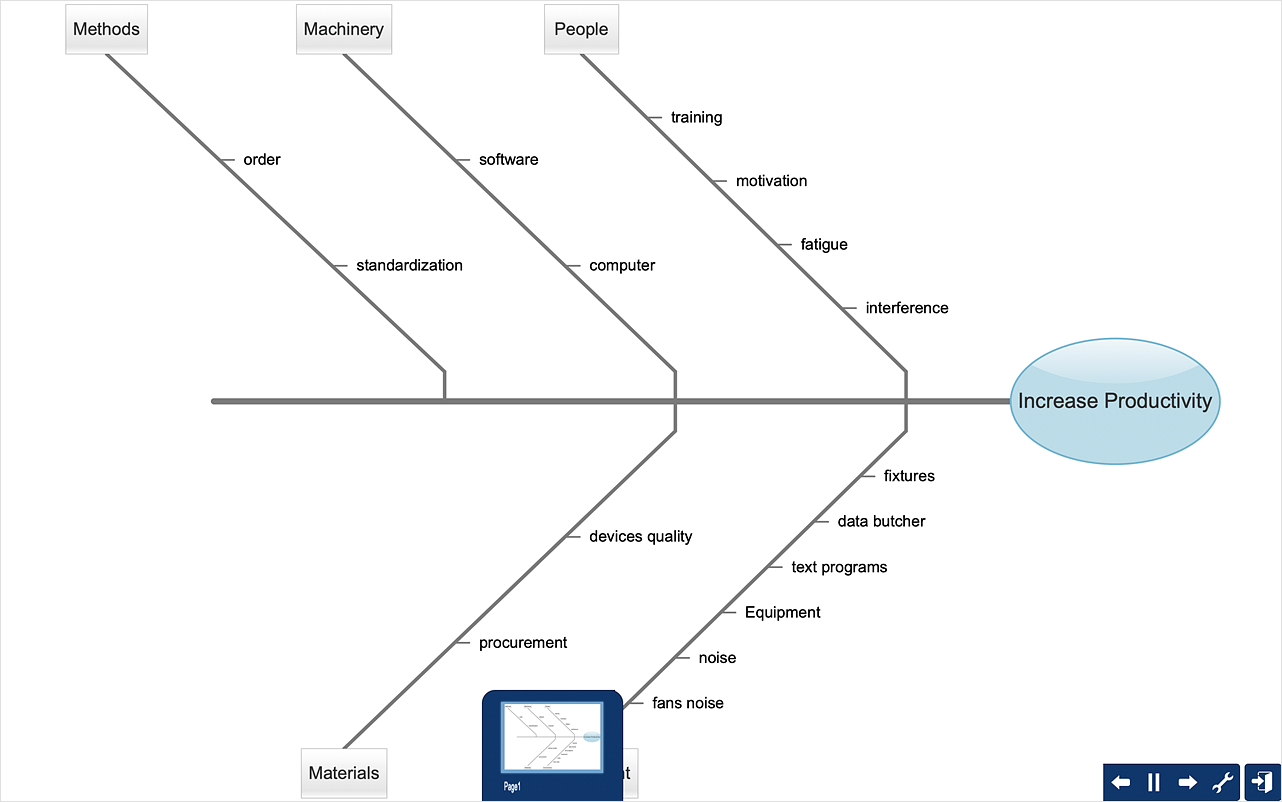
Content: Ishikawa (Fishbone or Cause and Effect) Diagram In the above diagram, we have shown two more categories i.e., management and maintenance. However, later on, this diagram was moulded as per the needs of the organization to include or exclude one or more categories. Mother Nature (Environment): This part of the diagram enlightens upon the external causes of the trouble such as the political, social, economic, technological and demographic environment.Materials: The procurement, quality, purchase price, vendor selection, warehousing and handling of the raw material hold the core factors causing problems.Measurement: This section list out the hurdles in analyzing efficiency, quality checks and other process measurements.Methods: The business process including production or manufacturing are deemed to cause trouble such as non-compliance with the set standards and regulations.Machines: A major part of the company’s finance is invested in the machinery and it is considered to be the backbone of corporate functioning.Manpower: Human resource is a vital element of the organization and can be seen as a reason behind most of the corporate failures or achievements.The basic cause and effect diagram proposed in the 1960s comprises of the following ‘6M Categories’: Thus, it is termed as a fishbone diagram. This layout appears like a fishbone where the head section depicts the effect or problem statement, and the middle body is seen as the multiple causes or factors.

This visual tool was brought to limelight by a Japanese engineer and quality control expert, Kaoru Ishikawa. It is a problem-solving approach which focuses on uncovering the effect of various factors over a particular issue. Definition: An Ishikawa diagram is the pictorial representation depicting the factors responsible for a certain problem in such a manner that the root cause is identified.


 0 kommentar(er)
0 kommentar(er)
